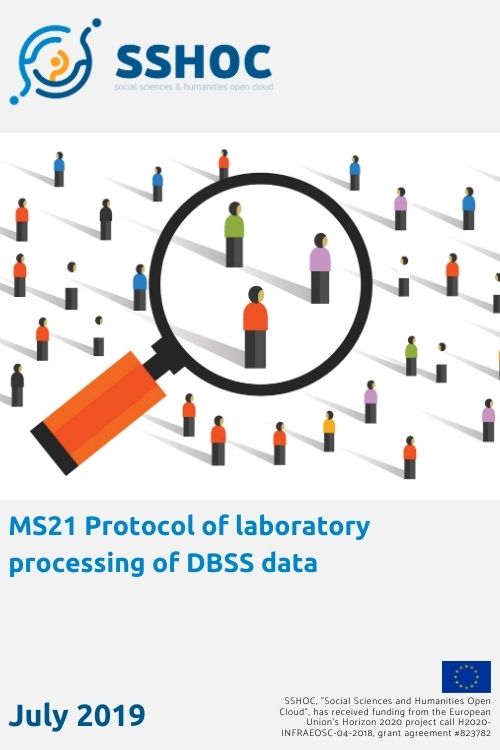
- Social Sciences & Humanities Open Cloud
MS21 Protocol of laboratory processing of DBSS data

Submission date:
12 April 2021
In cross-national population studies measuring health and life style factors in ageing by self-reported information is challenging due to several difficulties, such as socio-cultural differences in reporting style, social desirability and access to health care etc. Moreover, in older people a new health condition may remain unrecognised by sharing the same symptoms as an existing disease, or by having symptoms that are interpreted as a result of ageing per se. Also, cognitive decline or depressive symptoms may affect correct recollection. SHARE seeks to optimise the self-reported health information by carrying out objective measurements and assessments, resulting in harmonised unbiased results in the health of Europeans across diverse cultures and national institutions. As one of such objective health measurements, SHARE has collected ca 27.000 dried blood spot (DBS) samples in 12 different countries during its field collection in 2015. As SHARE provides free data access for all collected survey data to scientific researchers, it also aims to give access to these dried blood spot data. However, such innovative biomedical data pose new challenges to data processing, and demand new ways of data access. For the DBS data dissemination, we preview the following steps:
- Processing of the DBS in specialised laboratories to extract the health indicators of interest for SHARE, controlling for the effect of fieldwork conditions (primary analyses)
- Design of ethics guidelines and special data protection needs for providing scientific access to DBS data in the setting of an international survey
- Construction of a DBS database consisting of individual records for SHARE panel members with variables that represent the health indicator outcomes of the primary laboratory analysis for each panel member, as well as meta-data
- Linkage of the DBS database to the SHARE survey panel data into a complete dataset for scientific use
- Design of an operational procedure to provide scientific users access to the complete DBS-Survey dataset, following the ethics and data protection guidelines of step 2
- Release of a test case of a limited part of the DBS-Survey dataset for scientific use, evaluation by means of a usability test
- Improvement of the access procedure on the basis of the test results
- Release of final DBS-Survey dataset for scientific use (secondary analyses)
Steps 7 and 8 are out of the scope of the SSHOC project, whereas steps 2, 5, and 6 will result in deliverables D5.1, D5.2 and D5.4 of the project. In addition, steps 1 and 6 will be described in the milestones M21 and M23, respectively.
Publication type:
Milestone
